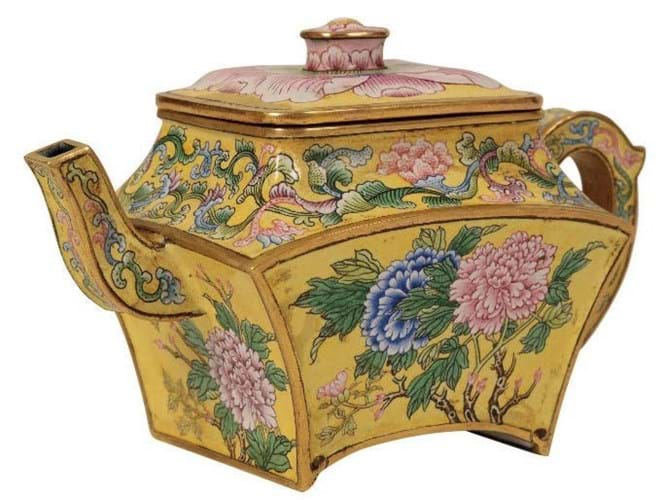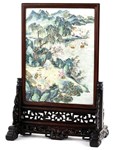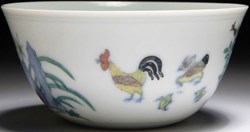At Mellors & Kirk (20% buyer’s premium) in Nottingham on October 21, it proved something of a surprise: selling via thesaleroom.com at £16,000.
Lingzhi or ‘divine fungus’ is among the most revered plants in China and a popular motif in Chinese art for two millennia. Daoist alchemists claimed that by taking lingzhi man could attain immortality and the dead could come to life.
However, such naturalistic porcelain models are extremely rare. Court records document that the Qianlong emperor commissioned porcelain lingzhi in 1744 with Tang Ying, supervisor of the imperial kilns at Jingdezhen, fulfilling the order the following year after struggling to achieve a successful firing.
When a similar ‘mark and period’ famille rose model on a wood stand was sold by Sotheby’s in Hong Kong in 2015 for something in the region of HK$11m (£1.1m), it was thought to be unique. It was described as a wall vase.
It awaits to be seen if the latest discovery is deemed a later homage or a rare 18th century survivor.
Beijing enamel ewer
Another potentially rare and valuable item of uncertain date offered for sale this month was a 6in (15cm) wine yellow ground famille rose enamel wine ewer (below) that emerged for sale at Duke’s (25% buyer’s premium) in Dorchester on November 9 – the doppelganger for another sold for £390,000 at Hansons in Derbyshire in September.
Three other almost identical pots are known with four-character Qianlong reign marks: the example in the National Palace Museum in Taipei, another in the Palace Museum in Beijing and a third sold at Sotheby’s Hong Kong in 2010 for around £1m.
Duke’s did not date its example, although listing its provenance as ‘a private West Country collection, acquired in Paris in the 1960s and thence by descent’. The hammer price this time was £20,000.
















